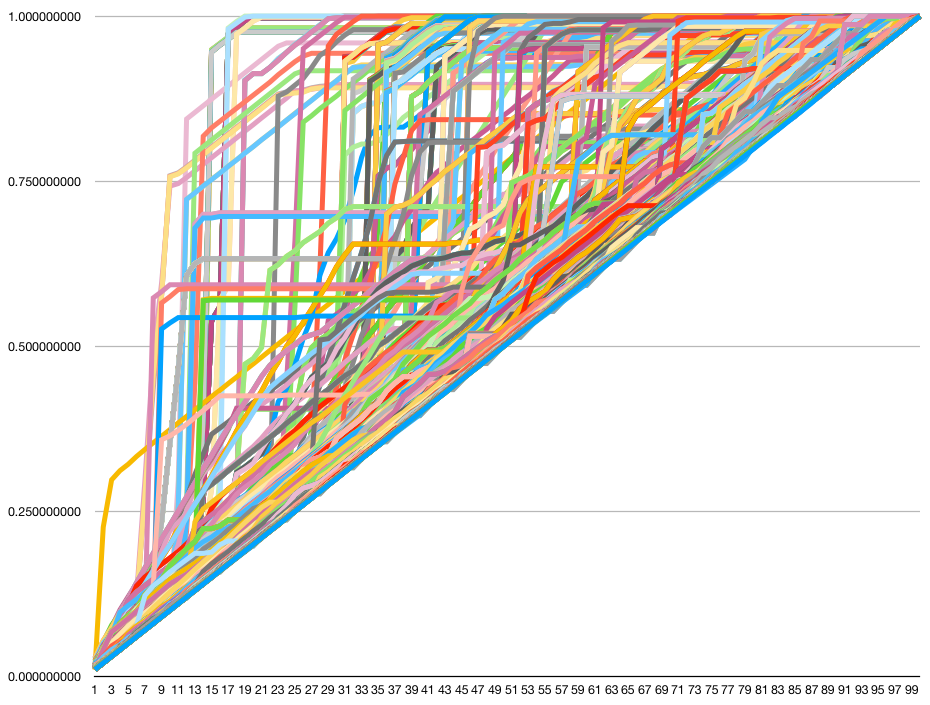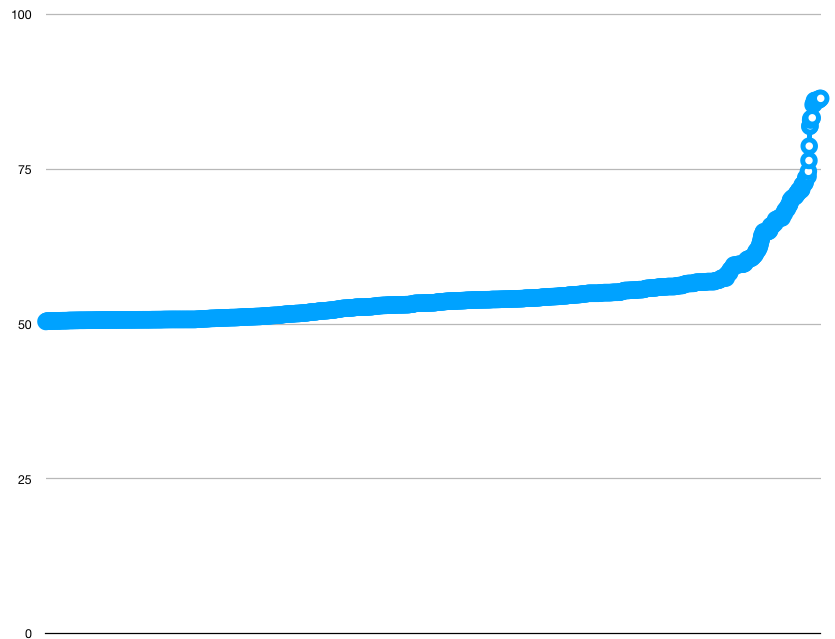- From: Myles C. Maxfield <mmaxfield@apple.com>
- Date: Wed, 07 Aug 2019 12:03:34 -0700
- To: "Levantovsky, Vladimir" <Vladimir.Levantovsky@monotype.com>
- Cc: Jonathan Kew <jfkthame@gmail.com>, "public-webfonts-wg@w3.org" <public-webfonts-wg@w3.org>
- Message-id: <6E7E092A-837B-4BFD-9765-9E0C155D9CE6@apple.com>
Here’s the data from Google Fonts: Looks a bit more difficult than the Windows fonts. NTR-Regular.ttf Telugu 78.736248482 Lohit-Bengali.ttf Bengali 78.831622569 TenaliRamakrishna-Regular.ttf Telugu, Latin 81.910529391 Peddana-Regular.ttf Telugu, Latin 82.017367 Ramaraja-Regular.ttf Telugu, Latin 82.060643793 Ponnala-Regular.ttf Telugu 82.925248156 Sitara-Regular.ttf Devanagari, Latin 83.176943573 Sitara-Bold.ttf Devanagari, Latin 83.176943573 Sitara-BoldItalic.ttf Devanagari, Latin 83.186576710 Sitara-Italic.ttf Devanagari, Latin 83.186576710 Amiri-Italic.ttf Arabic 83.235126624 Amiri-BoldItalic.ttf Arabic 83.304386938 Amiri-Regular.ttf Arabic 83.363365799 Amiri-Bold.ttf Arabic 83.39951432 SreeKrushnadevaraya-Regular.ttf Telugu 85.420147454 Suranna-Regular.ttf Telugu 85.4847986935 Taprom.ttf Khmer 85.498475514 Angkor-Regular.ttf Khmer 85.498475514 Timmana-Regular.ttf Telugu 85.7927372355 Chathura-ExtraBold.ttf Telugu, Latin 86.099921648 Chathura-Regular.ttf Telugu, Latin 86.099921648 Chathura-Bold.ttf Telugu, Latin 86.099921648 Chathura-Thin.ttf Telugu, Latin 86.099921648 Chathura-Light.ttf Telugu, Latin 86.099921648 Bokor-Regular.ttf Khmer 86.153956081 Moul.ttf Khmer 86.153956081 Siemreap.ttf Khmer 86.153956081 Dangrek.ttf Khmer 86.153956081 Metal.ttf Khmer 86.153956081 Moulpali.ttf Khmer 86.153956081 Content-Bold.ttf Khmer 86.153956081 Content-Regular.ttf Khmer 86.153956081 Freehand.ttf Khmer 86.153956081 Siemreap.ttf Khmer 86.153956081 Koulen.ttf Khmer 86.153956081 Preahvihear.ttf Khmer 86.272334086 Bayon-Regular.ttf Khmer 86.272334086 Chenla.ttf Khmer 86.272334086 OdorMeanChey.ttf Khmer 86.272334086 Mallanna-Regular.ttf Telugu 86.441653183 Mandali-Regular.ttf Telugu 86.442915173 Dhurjati-Regular.ttf Telugu 86.442915173 Ramabhadra-Regular.ttf Telugu 86.443724933 > On Aug 6, 2019, at 11:58 AM, Levantovsky, Vladimir <Vladimir.Levantovsky@monotype.com> wrote: > > For a glyphID-based model - the first request could simply be the "whole font file" with glyph data zeroed out (which compresses to almost nothing). The subsequent request would patch that with the glyphs that are actually in use. > > -----Original Message----- > From: mmaxfield@apple.com <mmaxfield@apple.com> > Sent: Tuesday, August 6, 2019 12:31 PM > To: Jonathan Kew <jfkthame@gmail.com> > Cc: public-webfonts-wg@w3.org > Subject: Re: Glyph Closure Scaling > > > >> On Aug 6, 2019, at 2:34 AM, Jonathan Kew <jfkthame@gmail.com> wrote: >> >> On 05/08/2019 22:03, Myles C. Maxfield wrote: >>> I was envisioning the range request model would send an early request for everything in the font other than the outlines. Percentage-wise, this works great for big fonts. >> >> That's still two separate requests, isn't it? The client needs to make one request to get the font header (which it can assume fits within a predetermined reasonable max size); that will tell it how much it needs to request in order to get everything up to the outlines. > > I was envisioning the early request wouldn’t be a range request. Instead, it would be a regular request for the whole file, and the browser would parse the bytes as they arrive, and close the connection (or stop requesting or whatever) when the glyph data is reached inside the file. This only makes sense if the glyph data is all at the end of the file. > > This idea is based loosely on how <video> streaming works, so I should investigate how they solve this particular problem. That being said, I don’t think this approach has to work in any one particular way. We can (and even should!) try a bunch of different related strategies and see which one works the best in practice. > >> >> So there are two complete round-trips to the server *before* it can begin to shape text and determine what glyph ranges it needs to request. >> >> On a sufficiently low-latency connection that might be fine, but I'm concerned that it could amount to many milliseconds in plenty of real-world cases. >> >> JK >> > >
Attachments
- text/html attachment: stored
- image/png attachment: Screen_Shot_2019-08-06_at_10.24.13_PM.png

- image/png attachment: Screen_Shot_2019-08-06_at_10.03.43_PM.png

- image/png attachment: Screen_Shot_2019-08-06_at_10.05.23_PM.png

Received on Wednesday, 7 August 2019 19:04:09 UTC